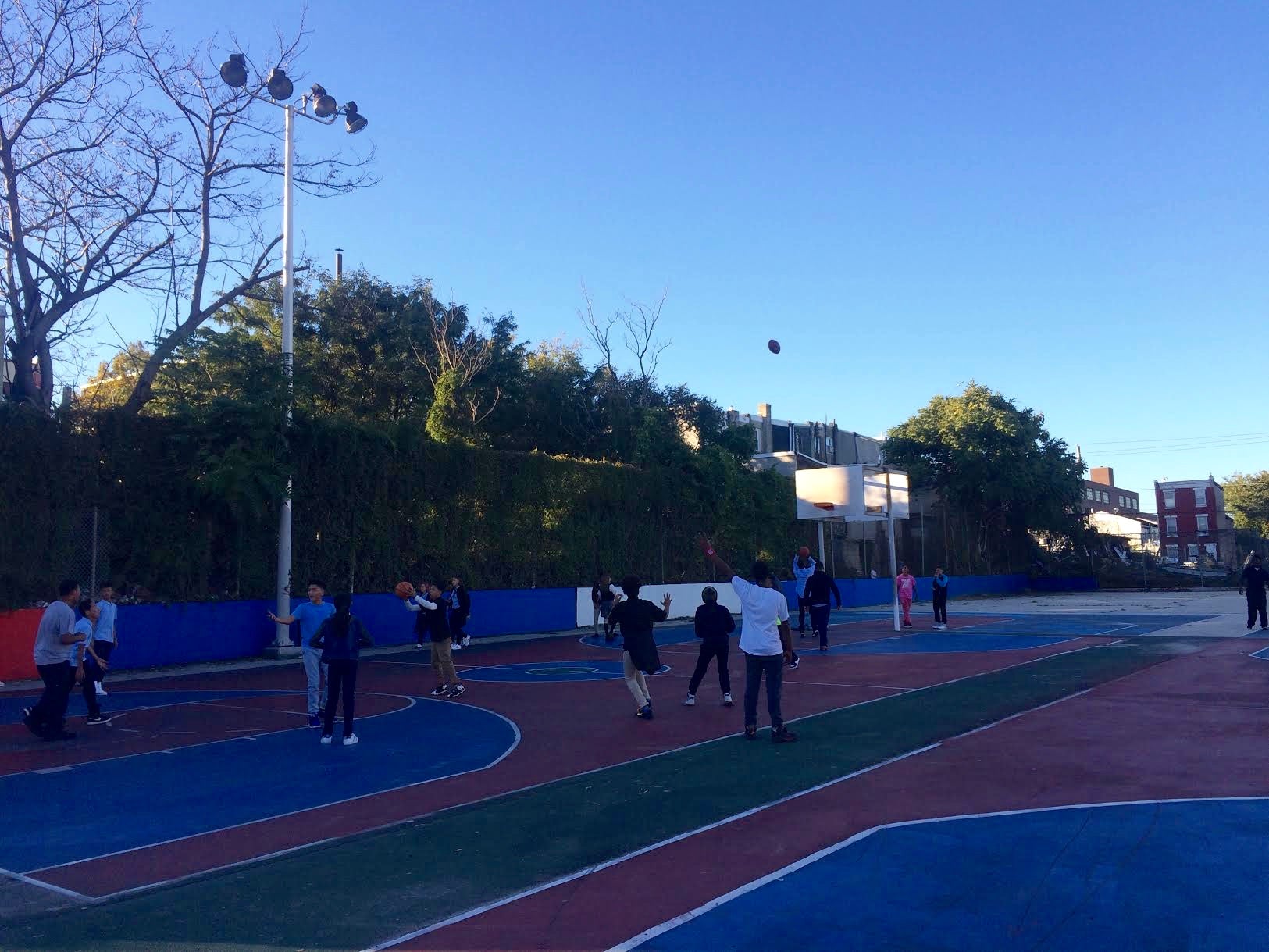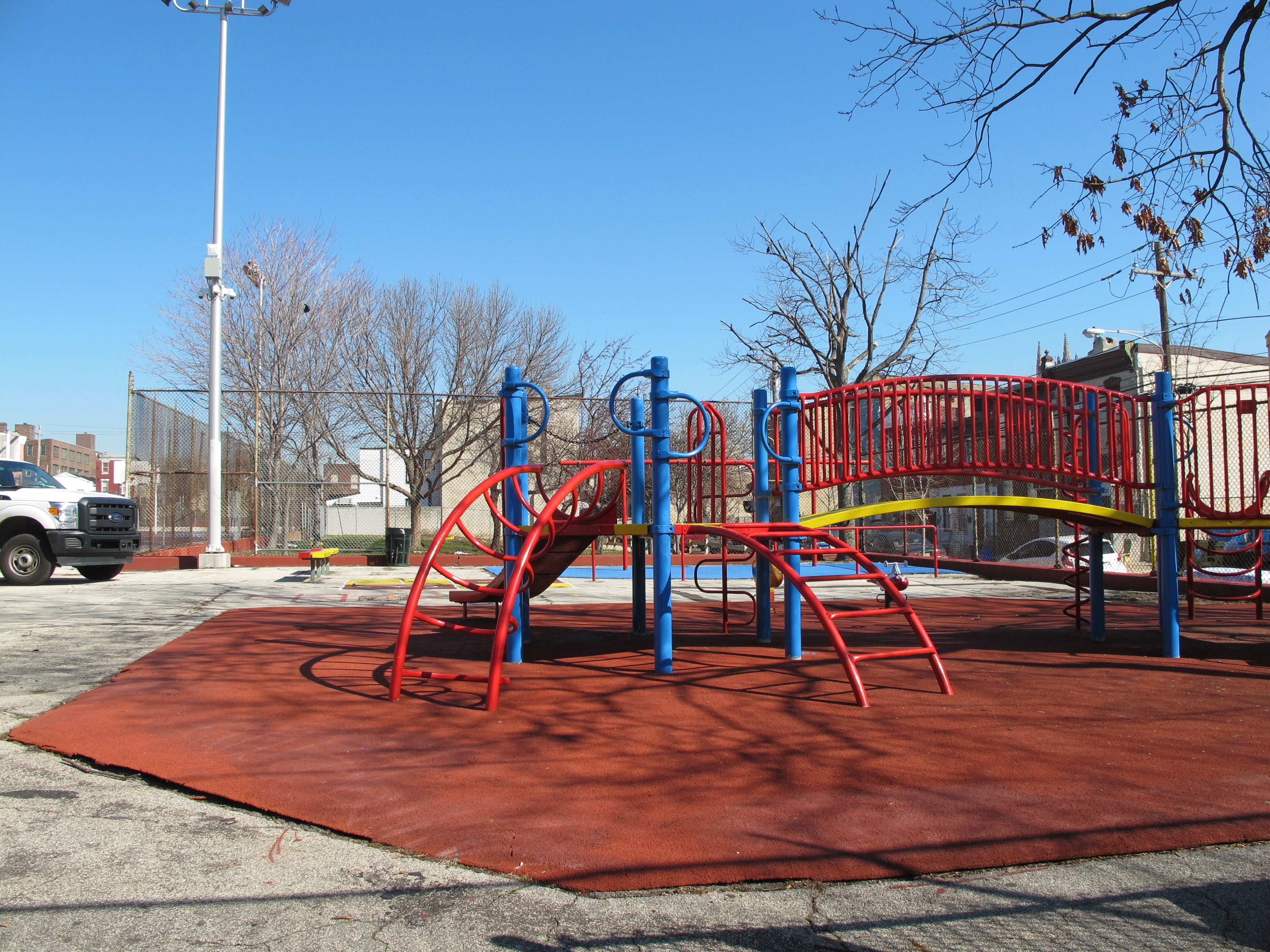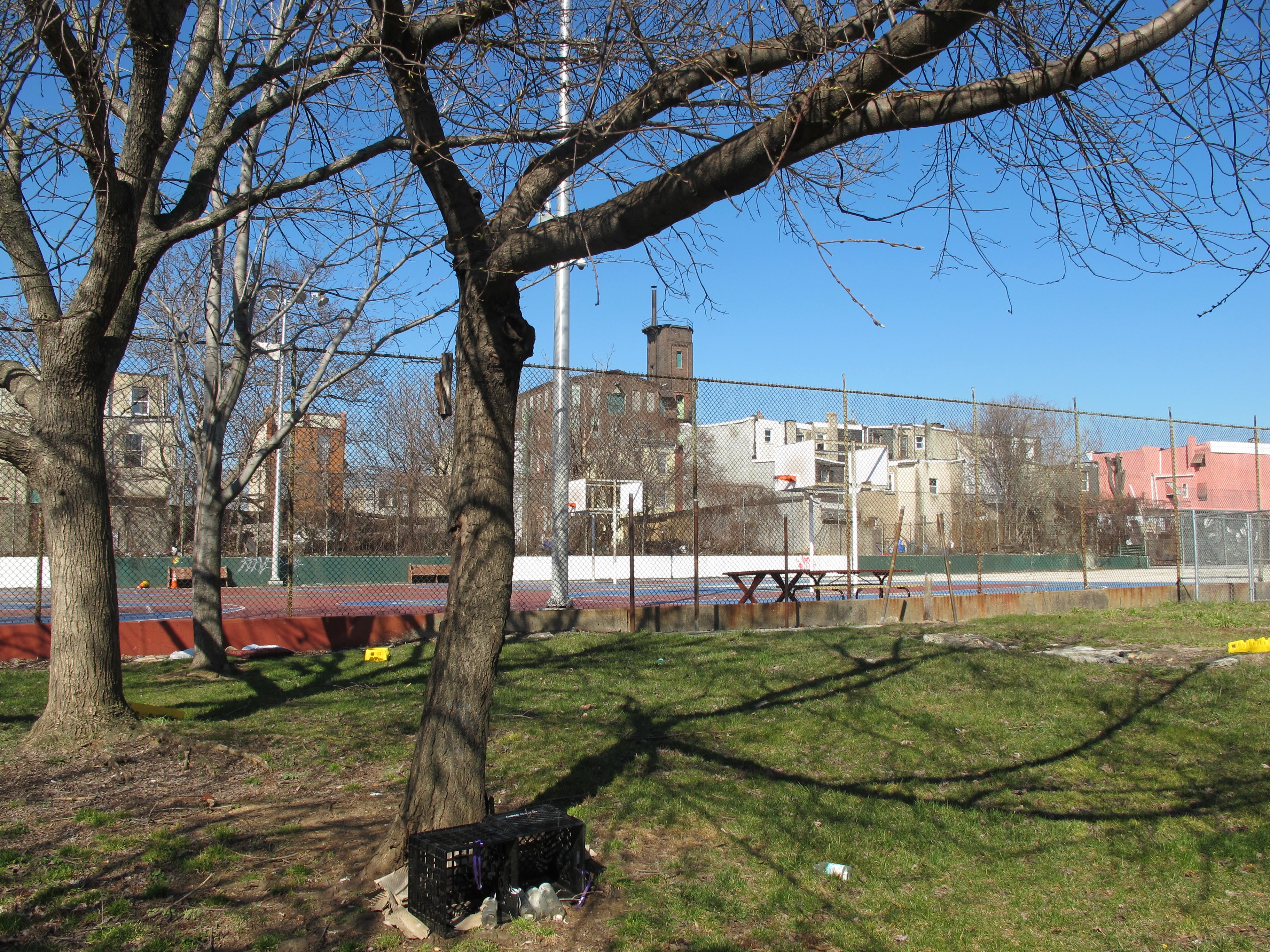Waterloo Playground’s revival takes off with Urban Roots / MTWB support
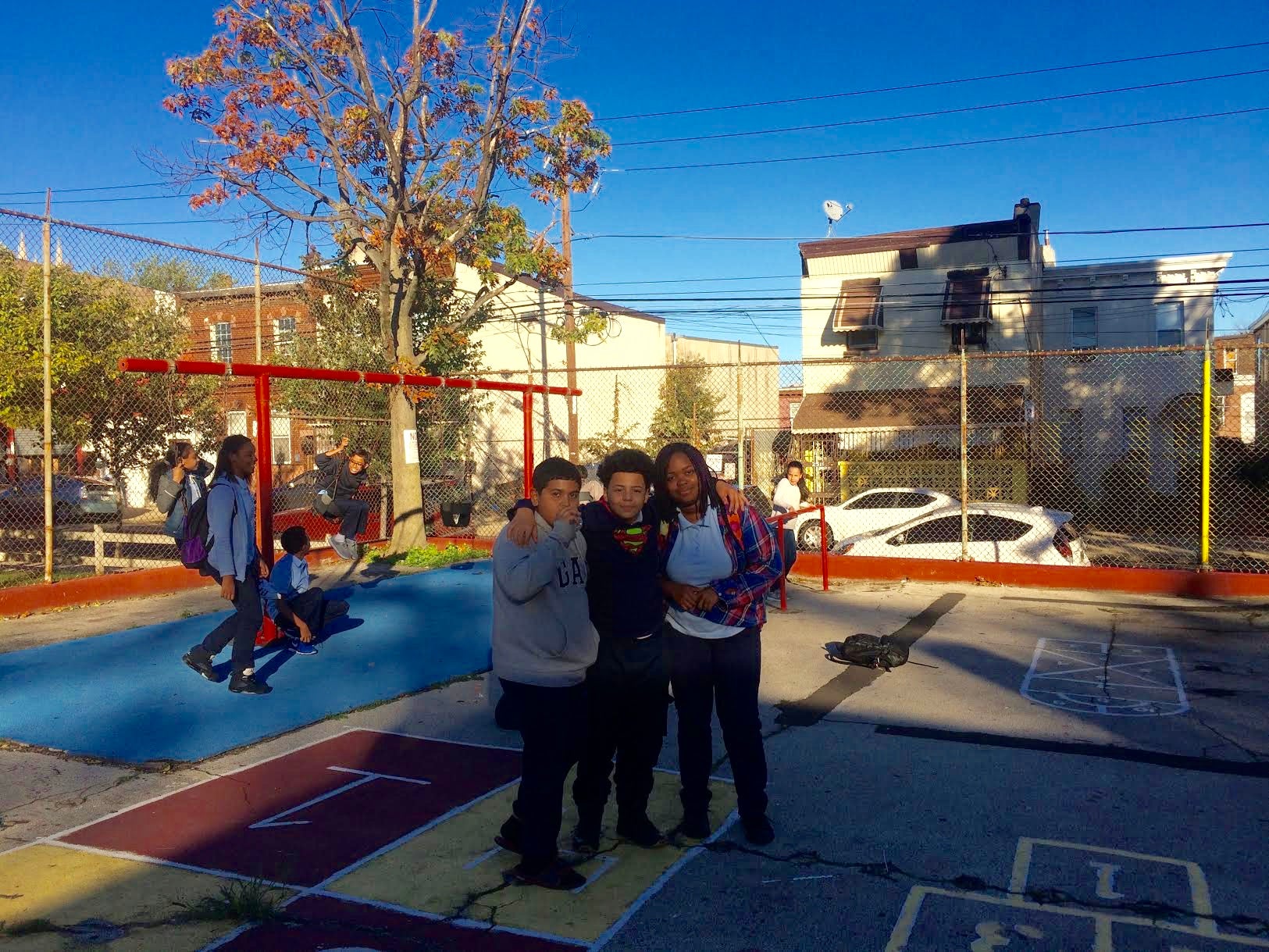
Community work is paying off at Waterloo Playground. The once-unsafe public space in West Kensington has seen a turnaround in recent years, and more change is in store.
Last year, Waterloo was picked as one of the sites for Play Space, a design competition convened by the Community Design Collaborative and Delaware Valley Association for the Education of Young Children. After the competition’s winning design – created by Studio Ludo, Roofmeadow, and Space for Childhood – was presented in March, Urban Roots and Make the World Better (MTWB) Foundation decided to help overhaul Waterloo.
“All the stars are aligning around Waterloo,” commissioner of the Department of Parks and Recreations Kathryn Ott Lovell told PlanPhilly at the launch event for the playground’s revitalization last week.
Ott Lovell said Waterloo has all the elements to become a perfect candidate for the Rebuild initiative, proposed by Mayor Jim Kenney to reinvest about $500 million in public and philanthropic funds to overhaul city parks, rec centers, and libraries, focusing on low-income areas where public and private support can be matched with civic efforts.
“Those are the two pillars of Rebuild, along with Council support,” said Ott Lovell. “Councilwoman [Maria] Quiñones-Sánchez has been very close to this playground, so when you have the two nonprofits coming in wanting to make this level of investment along with the equity issues that exist here, is sort of the model project for Rebuild.”
Urban Roots, a nonprofit founded in 2008, and MTWB, created by the Philadelphia Eagles’ linebacker Connor Barwin, have been partnering in the revitalization of public parks focusing on youth mentoring and community engagement. First they worked to overhaul Ralph Brooks Park and they’re still working on the reconstruction of Smith Playground, both in South Philadelphia. The partners were looking for a new project, and after the Play Space awards in March, they decided to take on the Waterloo project.
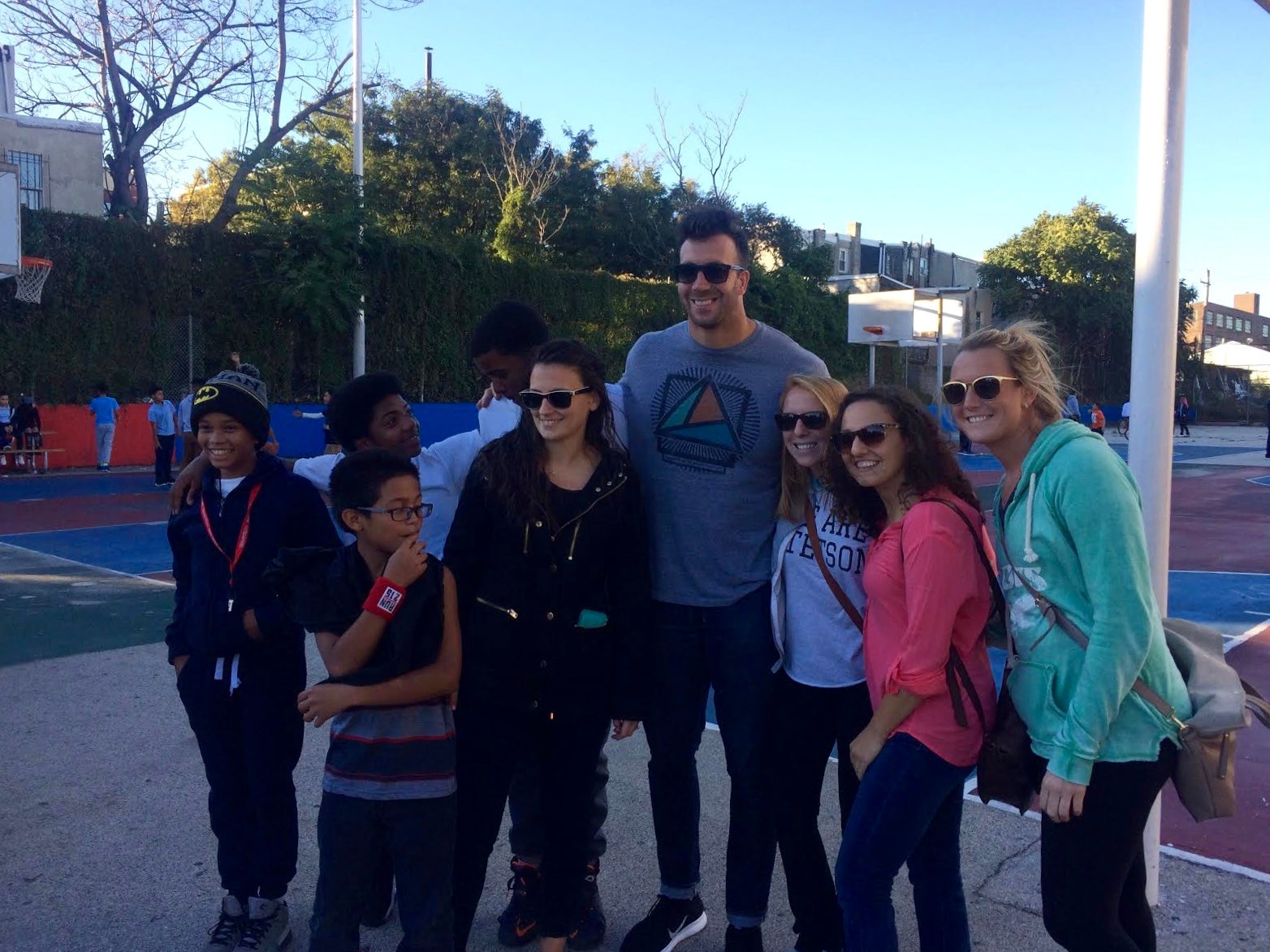
“We connected the community with the winning design team, from Studio Ludo and Roofmeadow, and pulled in Interface Studio Architects, and we’ve been working now to take this conceptual design to a final design,” said Claire Laver, director of strategic partnerships and projects for Urban Roots and MTWB. “We hope to get in the ground about a year from now, break ground fall 2017, and then get the park built.”
In June, Barwin raised $200,000 in a benefit concert at Union Transfer, and the nonprofits held another fundraising event during DesignPhiladelphia earlier this month. Urban Roots’ Nancy Chen told PlanPhilly that the fundraising target for the Waterloo project would become clearer once the scope of work is finalized. “Our estimate would be around $1 million capital budget for improvements. Our past projects in Smith Playground had a budget of over $2 million and Ralph Brooks upwards of $750,000 (including donated services from engineers, architects, etc.),” she said over email.
Today, the playground has two heavily used basketball courts and a pool, a playground area, a lot of unutilized concrete surface, and a building with a small library, tables and computers for youth to use. Seven years ago, the scenario was very different.
“When I first moved here this was really trashed out, it was really bad,” Nelson Gutierrez, 45, told PlanPhilly. “There was a lot of fear, people didn’t want to come out here. Now that they see a change, people are getting more involved. They have a place to go and enjoy themselves.”
Gutierrez said it took a lot of work, community meetings, and letters to get support. Finally, Councilwoman Quiñones-Sánchez helped them.
“Now we are seeing more people wanting to help,” Gutierrez said. “Before no one wanted to help us because they believed that this playground was not worth fixing, they didn’t want to do anything for us.”
Gutierrez also says it all changed when Edwin Desamour, a community advocate and executive director of Men in Motion in the Community (MIMIC), got involved through Councilwoman Quiñones-Sánchez. The playground had been closed due to safety concerns, but last year Desamour organized to clean and paint the building and the playground, things started looking better and a feeling of hope grew in the community.
“You have to understand there was a lot of drugs going on,” said Desamour. “The kids didn’t want to step out of their place. The parents didn’t let their kids step out their places because they feared they would get shot.”
Urban Roots and MTWB are taking the winning Play Space competition design – which transformed the central courts into a plaza, included growing areas for fresh foods, natural-based playing and a new landscape activated stormwater – as a starting point.
“We are not starting over, there’s been a lot of great work done at this site so far, but we’re really kicking off this next phase where we are bringing together partners on the implementation side,” Laver said.
Meghan Talarowski, director of Studio Ludo, told PlanPhilly they are working together with Interface Studio Architects and the nonprofits to make sure that the plan reflects what the community wants. They met with the neighbors for their design, she said, but not as much as she would have liked to.
“It was great that [Urban Roots + MTWB] they decided to take this on”, Talarowski said. “We are really excited.”
Urban Roots is engaging the community in the process and putting together a youth leadership team, and at the same time having conversations with the Parks Department and City Council to acquire, through Philadelphia Land Bank, 10 parcels of green space next to the park, and working with the Water Department to increase the stormwater management tools.
Just how Waterloo will be remade “depends on what happens on this next month of community engagement design process,” Laver said. “We are certainly keeping the basketball courts, but thinking of other ways to engage and intergenerational audience, and providing opportunities for nature based and education-based play.”
For both Gutierrez and Desamour the dream is having a place where kids can just be kids.
“Our kids are forgetting to be kids because they have to survive, they have to be tough out there, in the community with violence and drugs,” Desamour said.
“I would like to see more things for the children, renew the basketball courts, having family nights out, music, and people coming out and do talks for the kids,” Gutierrez said. “Whatever it takes to show to our kids that we care.”
“Now that the kids see that a football player came to play with them, and that the Park’s commissioner, the councilwoman, the block Captain were all in their park,” Desamour said. “Now people don’t feel like they’re neglected or ignored. People feel like, hey, we exist, we are here. We are putting Waterloo on the map.”
WHYY is your source for fact-based, in-depth journalism and information. As a nonprofit organization, we rely on financial support from readers like you. Please give today.



